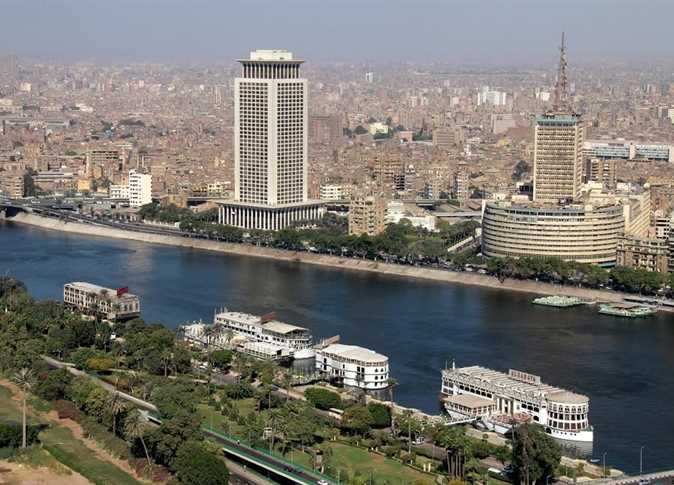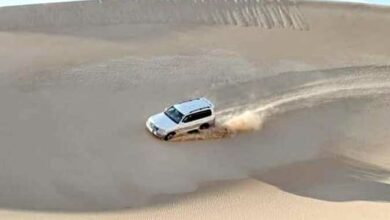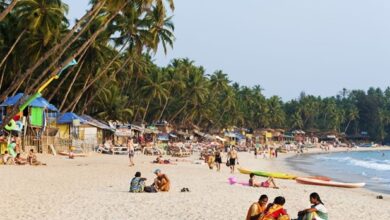We did not want to wake up that morning. We knew it was our last in Shalateen, and we would soon be leaving. Our motivation to prepare our belongings faded and the will to get going disappeared. We dragged our bags to the car and spent more time than needed arranging them, desperately looking for excuses to extend our stay. The hotel attendant plucked two of the artificial flowers that hung on the corridor walls and gave us one each as a souvenir. It was a touching moment. He was emotional so we did not want it to drag on any longer.
Before we left Shalateen we took a tour of the market. It seemed to extend far deeper than we had initially thought, and the merchandise available was far more diverse than any supermarket we had seen. What started as a small tour soon turned into a small shopping spree, stopping short of buying a giraffe skin whip, since at the price of LE150 it seemed expensive. After picking up a jabana (Bedouin ginger coffee) set and buying different parts at different stalls, we started looking for tapes of singers popular in the area.
A man originally from Upper Egypt helped show us the way to a closed stall that did not belong to him. He managed to pry open the door and let us in. He told us that the man who owned the stall did not care how much we paid. “All he does is sleep and eat cake,” he explained. He helped us choose the tapes, took the money, and in return for his help we bought some spices from his stall. He gave us two small gifts: a hand-made bracelet and a pack of Amber incense sticks, to show his appreciation.
We headed toward Shams Alam, our next stop by the Red Sea, where we were scheduled to meet our contact in the ranger station and arrange our trip into the valley. We needed a guide to be able to venture into the massive park that takes up 6000 square kilometers of land and 4000 square kilometers of sea, lying just above touristy Hamata and extending until Marsa Alam.
In the station, we met up with one of the rangers, a chatty man in his 30s who belonged to the influential el-Ababda tribe. He worked for the National Democratic Party in the Red Sea Governorate and was happy to explain how the main tribes are represented in elections. We were invited for a filling lunch of fish and lobster and we introduced to our guide, a quiet Bedouin man reputed to be one of the best jabana makers in the area. We were given extra tents for the overnight sleep in the mountains. Before leaving, one of us and the other men huddled around a map of the valley, tracking our path and selecting which spots would be feasible to visit in one day.
We settled on driving to the intersection of the valleys of Sikait and Nuqrus, located to the west of Ras Baghdady, which lies on the edge of the park. We had to drive south on the asphalt for less than 20 kilometers before turning right and entering the valley from there. Visitors and tourists usually use the entrance at Ras Hankourab, which lies further south, but that would have meant a longer journey and being overtaken by darkness in the desert before finding the desired spot for camping.
Once our 4X4 was on the sand, we picked up speed and headed south, then west again toward a famous Roman well, our first destination inside the park.
Next, we drove toward Sikait and Nuqrus. The two valleys had a rich history since they were the main sources of emerald in the European and Mediterranean regions during the Roman period. The desert we drove through housed the stone remnants of the quarters of the Roman emerald miners who lived there. The area itself carried the ancient name “Mons Smaragdus” or the Emerald Mountain, which is how Wadi el-Gemal is known to this day. We stopped at the Roman temples. Situated on top of hills and carrying ancient writing, we marvelled at their sight. We also went past a ranger domicile, a replica of the Roman houses.
We set our camp near Nuqrus, after struggling with pitching the over-sized tents the ranger had given us as darkness swiftly crept in. One of us was successful in putting up one tent, while the other two were not. We made a small fire using the coal we had carried with us from Shalateen. We enjoyed a light meal and once the fire had calmed, it was coffee time. Our guide seemed more excited about making coffee than at any other point on the trip. Brewing the coffee was a longer process than dinner, but it was worth it.
Soon after, we were all sleepy. We decided to sleep outside, even as the temperature was dropping quickly. Sheltered by the mountains and sleeping under starlit skies proved a magical experience in the early hours of the night as we watched the night sky, guessing constellations. One of us correctly pointed out Orion’s belt, but the rest was pure speculation. As the soft conversation trailed off and dawn approached, the freezing cold became more real and left us shaking inside our sleeping bags.
The downside to sleeping under the stars is that once the night is gone you are sleeping under the sun. The bright light ensured we woke up early. Our guide was already up and about. We started collecting our things, and made a new fire for our breakfast.
It wasn’t long before we heard the sound of car engines reverberating off the mountain’s many walls. It seemed to come from every direction. Two cars were hurtling toward us, leaving a sand cloud in their path. They looked threatening as they came to an aggressive halt right by our camp and we did not know who they were. Once they jumped out of the cars, violently slamming the doors, it did not take long to notice that two of them were carrying machine guns. They were border guards.
They had followed the car’s trail after spotting it as they were accompanying French scientists who came to the park to study birds. They started questioning us. When we explained that we were visiting with the knowledge and approval of the park management, their hostile tone eased. We were later told by the park rangers back in Shams Alam that the guards look out for rich Gulf Arabs who come to hunt the deer, which is illegal in the protectorate, and so they are usually over-cautious with strangers.
After the encounter with the guards, we packed what was left of our camp and headed back to the asphalt road. The trip soon turned into a deer photo hunt, as our guide magically spotted deers kilometers away. The tactic was to approach slowly so that the sound of the car engine would not scare them off. At one point, we switched the engine off and pursued the deer on foot, but to no avail. Once the deer caught wind of us, they ran to hiding in fast and elegant sprints. While we saw some from afar, we were not able to take any recognizable photos. Unexpectedly the deer sightings increased the closer we were to the road.
We were soon sitting at the reserve office as we went back to drop off our guide. We exchanged phone numbers, returned the tents and were ready to leave as soon as possible. It was the end of a long trip and we were beat, but we still had a long drive ahead of us.
The trip to Shalateen and back again had left us thinking. We reminisced about the people we had met, the conversations they’d inspired and the situations we found ourselves in. Even the most threatening incidents were recalled with smiles. Cairo, with its hustle and bustle, approached, eating away at the magic. Traffic, impatient drivers, over-crowded streets, and loud people reminded us why Shalateen was a pleasant escape. We did not want to go back.
Life & StyleTravel




